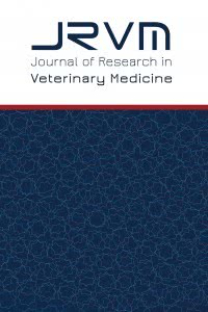MEKANİK VE FİZİKSEL ÖZELLİKLERİ BAKIMINDAN GENLEŞTİRİLMİŞ PERLİT AGREGALI HAFİF BLOK
Uçucu kül, Isıl iletkenlik, Perlit, Blok, Mekanik özellikler
Mechanical and Physical Properties of Lightweight Blocks with Expanded Perlite Aggregate
Perlite, Block, Fly ash, Thermal conductivity, Mechanical properties,
___
- ACI 122R, (2014). Guide to thermal properties of concrete and masonry Systems, Detroit.
- Bozkurt, N. (2013) The effect of high temperature on concrete containing perlite powder, SDU International Journal of Technologic Sciences, 5(1), 87-93.
- Celik, A.G., Kilic, A.M. ve Cakal, G.O. (2013) Expanded perlite aggregate characterization for use as a lightweight construction raw material. Physicochemical Problems of Mineral Processing, 49(2), 689-700. doi: 10.5277/ppmp130227
- Ciullo, P.A. (1996) Industrial Minerals and Their Uses: A Handbook and Formulary, Noyes Publications, NJ, USA.
- Davraz, M., Koru, M., ve Akdag, A.E. (2015) The effect of physical properties on thermal conductivity of lightweight aggregate, Procedia Earth and Planetary Science, 15, 85-92. doi: 10.1016/j.proeps.2015.08.022
- Demirboǧa, R., Şahin, R., Bingöl, F. ve Gül, R. (1999) The usability of blast furnace slag in the production of high strength concrete, Proceedings of the Fifth International Symposium on Utilization of High Strength/High Performance Concrete, Norway, 1999, 1083-1091.
- Demirboğa, R. ve Gül, R. (2003) The effects of expanded perlite aggregate, silica fume and fly ash on the thermal conductivity of lightweight concrete, Cement and Concrete Research, 33, 723-727. doi: 10.1016/S0008-8846(02)01032-3
- Erdem, T.K., Meral, C., Tokyay, M. Ve Erdogan, T.Y. (2007) Use of perlite as a pozzolanic addition in producing blended cements, Cement & Concrete Composites, 29, 13-21. doi: 10.1016/j.cemconcomp.2006.07.018
- Işıkdağ, B. (2015) Characterization of lightweight ferrocement panels containing expanded perlite-based mortar, Construction and Building Materials, 81, 15-23. doi:10.1016/j.conbuildmat.2015.02.009
- Kramar, D. ve Bindiganavile, V. (2013) Impact response of lightweight mortars containing expanded perlite, Cement & Concrete Composites, 37, 205-214. doi:10.1016/j.cemconcomp.2012.10.004
- Malhotra, V.M. (2000) Role of supplementary cementing materials in reducing greenhouse gas emissions, Concrete Technology for a Sustainable Development in the 21st Century, E&FN Spon, London. 226-235.
- Mo, K.H., Lee, H.J., Liu, M.Y.J. ve Ling, T.C. (2018) Incorporation of expanded vermiculite lightweight aggregate in cement mortar, Construction and Building Materials, 179, 302-306. doi: 10.1016/j.conbuildmat.2018.05.219
- Polat, R., Demirboğa, R. ve Khushefati W.H. (2015) Effects of nano and micro size of CaO and MgO, nano-clay and expanded perlite aggregate on the autogenous shrinkage of mortar, Construction and Building Materials, 81, 268-275. doi: 10.1016/j.conbuildmat.2015.02.032
- Różycka, A. ve Pichór, W. (2016) Effect of perlite waste addition on the properties of autoclaved aerated concrete, Construction and Building Materials, 120, 65-71. doi:10.1016/j.conbuildmat.2016.05.019
- Sengul, O., Zaizi, S., Karaosmanogu, F. ve Tasdemir, M.A. (2011) Effect of expanded perlite on the mechanical properties and thermal conductivity of lightweight concrete. Energy and Buildings, 43, 671-676. doi: 10.1016/j.enbuild.2010.11.008
- Topcu, İ.B. ve Isikdag, B. (2008) Effect of expanded perlite aggregate on the properties of lightweight concrete, Journal of Materials Processing Technology, 204, 34-38. doi: 10.1016/j.jmatprotec.2007.10.052
- Torres, M.L. ve Ruiz, P.A.G. (2009) Lightweight pozzolanic materials used in mortars: Evaluation of their influence on density, mechanical strength and water absorption, Cement & Concrete Composites, 31, 114-119. doi: 10.1016/j.cemconcomp.2008.11.003
- TS-EN772-1, (2015), Kâgir birimler - Deney yöntemleri – Bölüm 1: Basınç dayanımının tayini, Türk Standartları Enstitüsü, Ankara.
- TS-EN772-6, (2004), Beton kâgir birimlerin eğilmede çekme dayanımının tayini, Türk Standartları Enstitüsü, Ankara.
- TS-EN772-13, (2002), Kagir birimlerin net ve brüt kuru birim hacim kütlelerin tayini (doğal taş hariç), Türk Standartları Enstitüsü, Ankara.
- TS-EN12664, (2009), Yapı malzemeleri ve mamulleri - Isıl direncin, korumalı tablalı ısıtıcı ve ısı akı ölçerin kullanıldığı metotlarla tayini - Isıl direnci orta ve düşük seviyede olan kuru ve rutubetli mamuller, Türk Standartları Enstitüsü, Ankara.
- TS-EN12667, (2003), Yapı malzemeleri ve mamullerinin ısıl performansı-Mahfazalı sıcak plaka ve ısı akış sayacı metotlarıyla ısıl direncin tayini-Yüksek ve orta ısıl dirençli mamuller, Türk Standartları Enstitüsü, Ankara.
- Yu, L.H., Ou, H., ve Lee, L.L. (2003) Investigation on pozzolanic effect of perlite powder in concrete, Cement and Concrete Research, 33, 73-76. doi: 10.1016/S0008-8846(02)00924-9
- ISSN: 2148-4147
- Yayın Aralığı: 3
- Başlangıç: 2002
- Yayıncı: BURSA ULUDAĞ ÜNİVERSİTESİ > MÜHENDİSLİK FAKÜLTESİ
Şule BEKİRYAZICI, Recep EKEN, Güneş YILMAZ
Reşat Oğuzhan SÜMER, Betül GÜLÇİMEN ÇAKAN, Mustafa Cemal ÇAKIR, Agah UĞUZ
ANAEROBİK ÇÜRÜTÜCÜ ATIKSULARININ MİKROALG REAKTÖRLERİNDE ARITILMASI
Rukiye ERTAN, Abdil KUŞ, İsmail DURGUN
Ceyhun AKSOYLU, Musa Hakan ARSLAN
FOTOVOLTAİK SİSTEMLERİN PROJELENDİRME, KURULUM VE İŞLETİLMESİNDE ÖNEMLİ FAKTÖRLER
Abdulvahap YİĞİT, NURULLAH ARSLANOĞLU, Buket Seçil EKER
Nano Boyutlu Vücut Merkezli Kablosuz Ağların Alveolar Alanları ve İnsan Dokuları İçin Numerik Analiz
Elif Nur KALEMCİ, Sabriye Banu İKİZLER, Tayfun DEDE, Zekai ANGIN
Sinkrotron Işınımı: Depolama Halkasından Sert X-ışını Demet Hattına
